Sample Acquisition Data
1. Time-dependent changes in hydrogen-terminated silicon
Purpose and Experiment
We investigated how silicon wafers terminated with hydrogen on their surfaces via HF treatment change over time. We desorbed the hydrogen adsorbed on the surface and performed evaluations.
The experiment and evaluation were conducted using the following procedure.
1. Prepare the hydrogen-terminated Si chips to be used in the experiment.
2. After sample preparation, perform temperature-programmed desorption experiments (desorption rate = 60K/sec) on Si chips after 2 days, 7 days, 14 days, and 28 days.
3. Compare the desorption signals for the desorbed hydrogen.
![]()
Results
As shown in the figure below, surface hydrogen decreases over time.
Further tracking experiments are needed to determine the extent of this decrease.
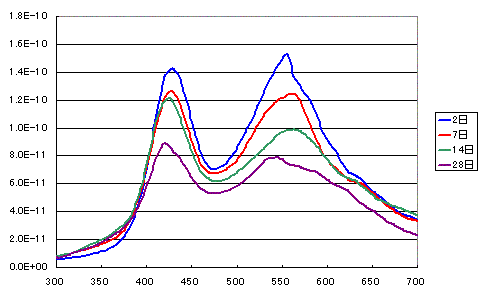
The decrease in surface hydrogen is thought to occur because oxidation progresses, generating hydroxyl groups on the surface.
The following figure shows surface hydrogen and hydroxyl groups combining to form water, which then desorbs.
As expected, the amount of water increases over time.
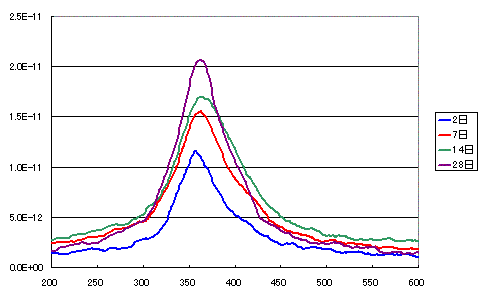
![]()
2. Hydrogen Ion Implantation Sample Data
Example of hydrogen ion-implanted sample: 1E16 ions/cm²
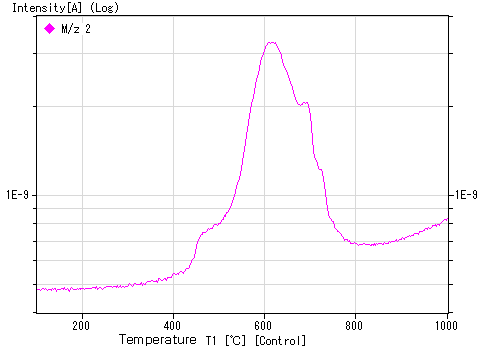
Example of hydrogen ion implantation sample: 1E17 ions/cm²
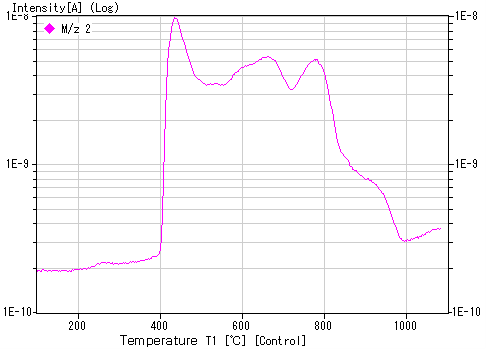
Note: The temperature at which the peak appears depends on various conditions, so slight variations may occur between devices.
![]()
3. Reproducibility Data for Hydrogen Ion Implantation Samples
Example of hydrogen ion implantation sample: 1E16 ions/cm²
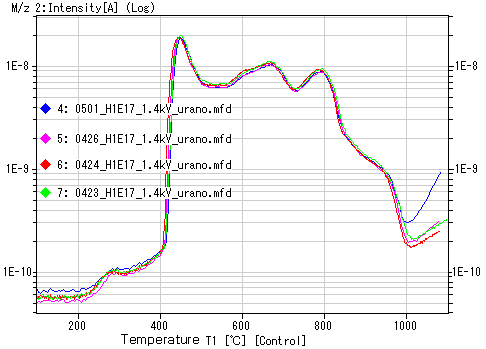
Note: The temperature at which the peak appears depends on various conditions, so slight variations may occur between devices.
![]()
4. Data for Calcium Oxalate-Coated Argon Ion Implantation Samples
Example of calcium oxalate-coated argon ion implantation sample
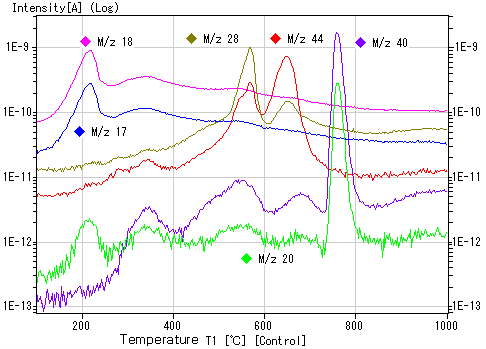
Note: The temperature at which the peak appears depends on various conditions, so slight variations may occur between devices.
![]()
5. Hydrogen Desorption Characteristics of Hydrogen-Charged Low-Carbon Mild Steel Sheets (Low-Temperature Heating Desorption)
⇒Hydrogen Desorption Characteristics of Hydrogen-Charged Low-Carbon Mild Steel Sheets ※A PDF file (170kb) will open.
Contact Us
If you have any questions or concerns about our products,
please feel free to contact us using the inquiry form below.
